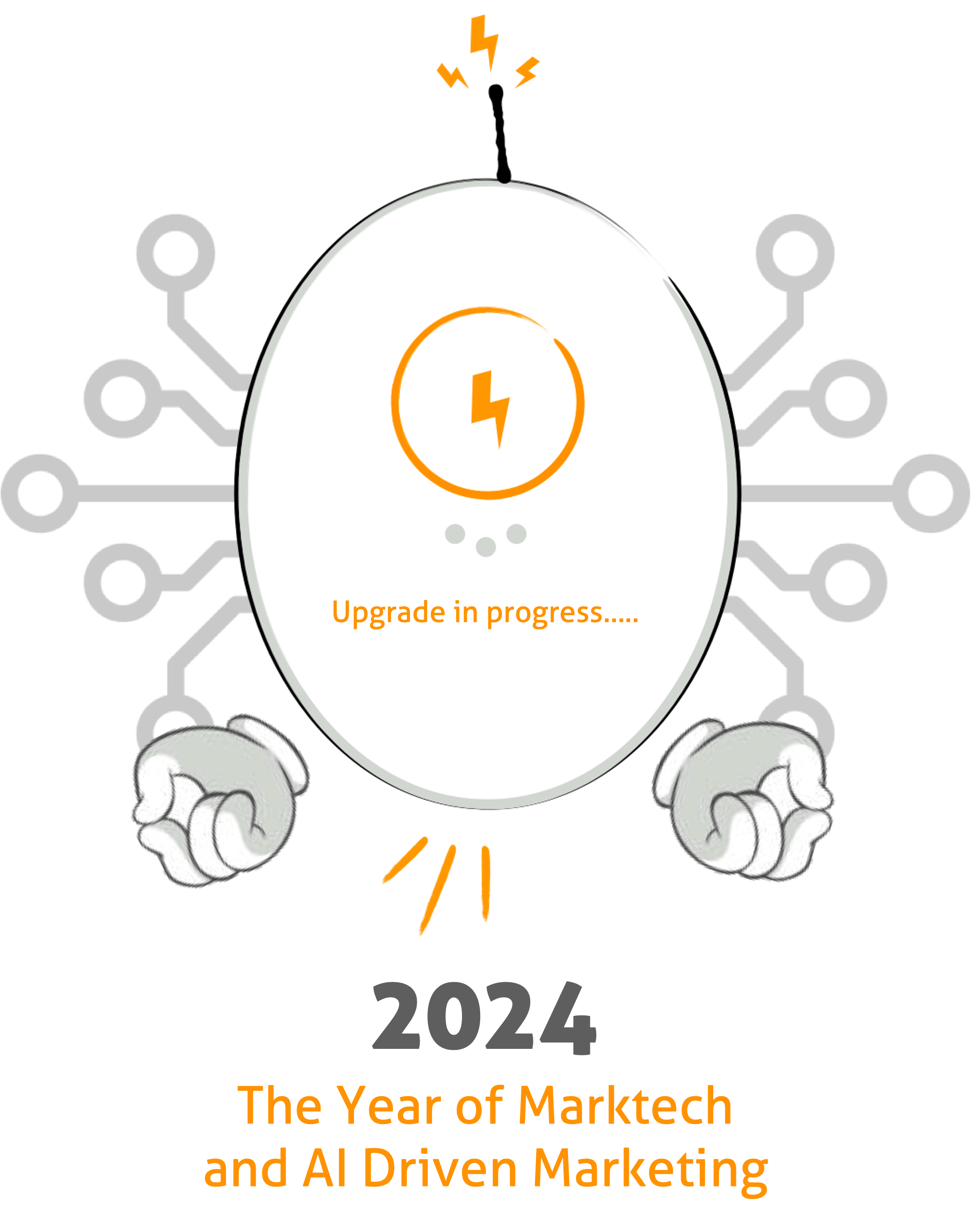
AI in Marketing:
Artificial intelligence (AI) is rapidly transforming the marketing landscape. By automating tasks, analyzing data, and personalizing messages, AI can help marketers reach their target audiences more effectively and efficiently.
How is AI used in marketing?
- Data analytics: AI can be used to collect and analyze vast amounts of data about customer behavior, demographics, and interests. This information can then be used to create more targeted and personalized marketing campaigns.
- Personalization: AI can be used to personalize marketing messages and content for each individual customer. This can be done by using factors such as past purchase history, website browsing behavior, and social media interactions.
- Chatbots: AI-powered chatbots can be used to provide customer support, answer questions, and generate leads. Chatbots can also be used to automate tasks such as scheduling appointments and sending follow-up emails.
- Predictive analytics: AI can be used to predict future customer behavior. This information can then be used to target customers with the right message at the right time.
- Content creation: AI can be used to create content that is tailored to specific audiences. This can include blog posts, email campaigns, social media posts, and even product descriptions.
How can AI benefit businesses?
- Increased efficiency: AI can automate many of the tasks that are currently done manually by marketers. This can free up time for marketers to focus on more strategic and creative work.
- Improved targeting: AI can help marketers target their marketing campaigns more effectively. This can lead to increased conversions and ROI.
- Personalized experiences: AI can help marketers create personalized experiences for their customers. This can lead to increased customer loyalty and satisfaction.
- Improved decision-making: AI can help marketers make better decisions by providing them with insights into customer behavior and market trends.
What are the challenges of using AI in marketing?
- Data privacy: AI algorithms rely on data to learn and make predictions. Businesses need to be careful about how they collect and use this data to protect customer privacy.
- Accuracy: AI algorithms are only as good as the data they are trained on. If the data is inaccurate, the results of the algorithm will also be inaccurate.
- Explainability: It can be difficult to explain how AI algorithms make decisions. This can make it difficult for businesses to understand why certain customers are targeted or why certain messages are sent.
As AI technology continues to develop, we can expect to see even more innovative and effective ways to use AI in marketing. Some of the potential areas of growth for AI in marketing include:
- Real-time marketing: AI can be used to track customer behavior in real time and deliver personalized messages accordingly.
Virtual assistants: AI-powered virtual assistants can be used to provide customer support, answer questions, and even make purchases. - Augmented reality: AI can be used to create augmented reality experiences that allow customers to interact with products and services in a more immersive way.
AI is rapidly transforming the marketing landscape. By automating tasks, analyzing data, and personalizing messages, AI can help marketers reach their target audiences more effectively and efficiently. The future of AI in marketing is bright, and we can expect to see even more innovative and effective ways to use AI in marketing in the years to come.
I hope this blog post has given you a better understanding of how AI is being used in marketing today and how it can benefit businesses. If you have any questions, please feel free to leave a comment below.
Share This Story, Choose Your Platform!
FAQs
Marinoid has a different grammatical meaning. We coined it from two words viz Marketing + Droids. A futuristic approach to marketing. Our mascot ‘Noidy’ is designed and inspired by the movie, WALLE and shares the same emotional quotient.
You will get a call from us within 24 hours or when you have scheduled a call. First meeting focuses on understanding your business problem and/or marketing request. We will brainstorm the need and discuss how to approach it. If you like the approach, we will discuss the commercials and kickstart the journey.
Digital Marketing is not magic. It is a science and art. Besides, there are various factors which decide ‘success’. Treat marketing as an investment centre rather than a cost centre. Understand and brainstorm as much as possible before committing to the plan.
A wise man once said – “If you throw peanuts, you will only attract monkeys!” At Marinoid, we focus on helping you achieve GTM first rather than focusing on our profits – so don’t worry we will help you regardless.
In simple terms, your website – your most critical asset. Focus most of your efforts on making this asset robust, scalable and simple. It should be your best replacement on the web and all your efforts should be circled around this asset.
Yes, there is an hourly charge for consultation. Check our pricing page or drop us a note and we will tell you the details.

Some of our Recent Posts:
Your B2B Marketing Isn’t Broken — It’s Just Operating on 2018 Logic in a 2025 Reality
Let’s set the scene. You're running a B2B SMB in 2025. You've got a great product, a tight-knit team, and a marketing funnel that should be working harder than [...]
Beyond Buzzwords: How SMBs Can Transform Virtual Influencers into AI-Driven Problem-Solvers
Welcome to the Future of SMB Marketing Picture this: you run a thriving SMB offering IT services or products, and your customer pipeline is growing fast. Great news! But [...]
The Future of Attraction: Inbound Marketing in 2025—A Strategic Guide for SMBs
As we get ready for 2025, the way we attract customers is evolving rapidly, driven by the fusion of advanced technology, shifting consumer expectations, and innovative inbound strategies. For [...]
How AI and Personalization are Revolutionizing Customer Engagement.
A Roadmap for SMBs in 2025 Imagine knowing each of your customers so well that you can tailor every interaction, every message, every offer just for them. It sounds like [...]



